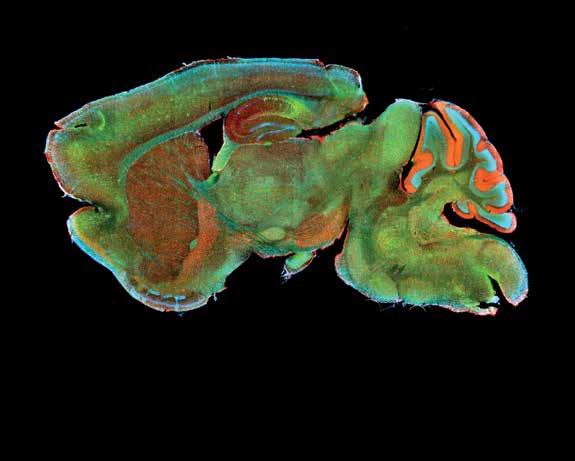
2 minute read
Discovering why Alzheimer’s disease affects the sexes differently
It has long been recognised that biological sex seems to make a difference when it comes to Alzheimer’s disease. Women are diagnosed slightly more often than men, even when accounting for differences in life expectancy, and the changes they go through are different. Assistant Prof. Enrico Glaab and the Biomedical Data Science group started an interdisciplinary project, in collaboration with several teams at the LCSB, to find out where these observed differences might show up in gene activity patterns.
Bioinformatician Assistant Prof. Enrico Glaab has been researching neurodegen-erative diseases such as Alzheimer’s and Parkinson’s since 2011. In the beginning, his work primarily involved examining brains post-mortem. Unfortunately, only the late stages of the disease can be studied this way. “In order to understand the early-stage mechanisms, we required dedicated disease models,” he explains. In this recent project, the researchers studied a genetic mouse model for Alzheimer’s, normal mice serving as a control group. “We observed, at the level of single cells, the animals’ brain areas that are predominantly affected by Alzheimer’s,” explains Glaab. “We found out that the activity of individual genes differed significantly, not only between the Alzheimer’s model and the control group as expected, but with sex-specific changes in Alzheimer’s as well.”
Advertisement
Genes in an organism do not continuously operate at full power. Their activity can be either elevated or suppressed. A change in the activity of a proteinencoding gene can increase or decrease the production of that specific protein. Glaab and his team discovered that the activity of certain genes changed significantly in Alzheimer’s mice, compared to the control mice for only one of the sexes. Moreover, they also discovered that the activity of other genes changed significantly for both sexes, but in opposite directions. “We would like to explain the mechanisms behind these differences using what we call gene regulatory networks,” the researcher says. “We developed computational models of how the regulation between multiple genes takes place.” This is governed by so-called transcription factor genes. In simple terms, these are master controllers that regulate the activity of several other genes. Together, those genes form a network. “If we observe coordinated and sex-specific activity changes between Alzheimer’s mice and control mice in such a network, we can better understand the gene regulatory mechanisms.”
Enrico Glaab’s research group is specialised in bioinformatics data analysis. They combine experimental data and computational analyses using various methods, including artificial intelligence. For this study, they collaborated with other teams at the LCSB. “The Neuropathology group carried out the animal experiments and we jointly interpreted our results,” details Glaab. Members from the rodent platform also supported the animal investigations. “One of the important principles when working with animal models is to use as few animals in the experiments as possible,” he explains. “Yet, the data gained must provide a large enough basis to deliver reliable results.” Combining new bioinformatics methods with the expertise of scientists and technicians familiar with animal research is of great help in this respect. “This interdisciplinary collaboration between the experimental and computational teams is essential for our work,” Glaab relates. “Of course, there are challenges that arise when research groups with different backgrounds and scientific terminologies work together, but that made the project all the more exciting to me.”
Now that this joint effort at the LCSB led to the discovery of changes that certain genes undergo in a common Alzheimer’s model, the researchers are already taking the next step. So far, they have worked with amyloid beta mice. The protein known as amyloid beta is found as deposits in the brains of Alzheimer’s patients. For the next step, they are using tau mouse models, in which a different Alzheimer-associated protein accumulates in specific brain regions. “By combining the different mouse model findings with data sets from human post-mortem brain tissues, we are gaining a more complete picture of the processes in Alzheimer’s disease,” says Enrico Glaab. “Understanding the sex-specific mechanisms behind the disease has the potential to provide more accurate diagnostics and pave the way for patient-tailored and more effective treatments,” he concludes. ¢











